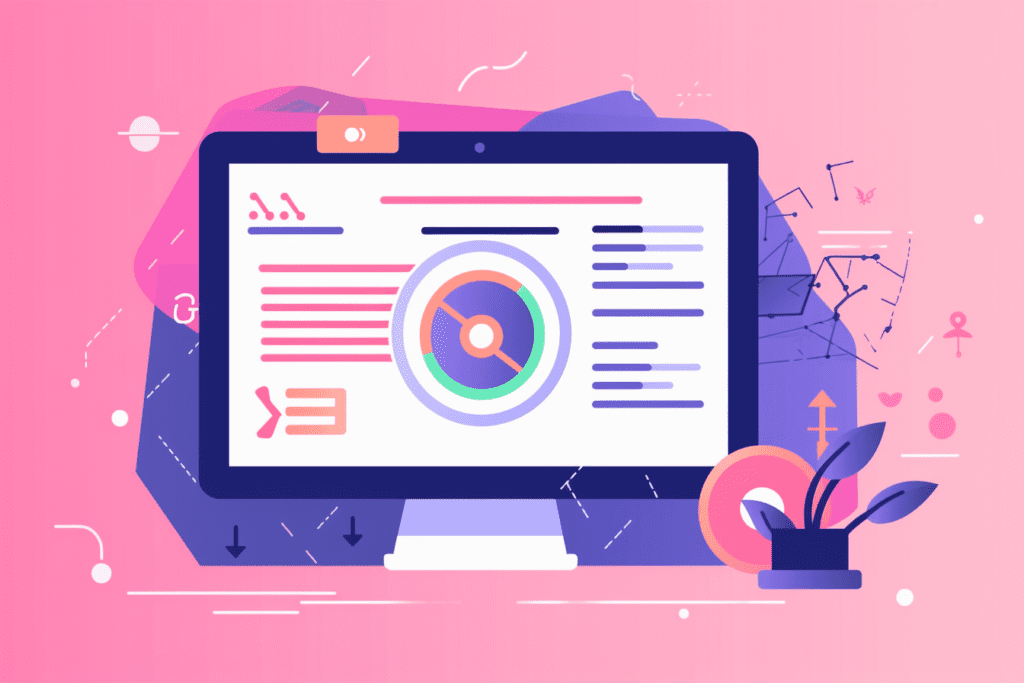
Dive into the transformative power of canonical tags in SEO strategy. Master the implementation, identify common issues, and optimise your site's visibility with our comprehensive guide. Ideal for digital marketing professionals, small business owners, and students
In the digital age where online visibility spells the difference between success and obscurity, Search Engine Optimisation (SEO) is no longer an optional strategy. It is an essential practice that digital marketing professionals, business owners, and students alike should master. Among the many facets of SEO, there’s one element that’s often overlooked but holds substantial power: the canonical tag. The canonical tag, or ‘rel=canonical’, is a life-saving piece of HTML code that wards off the bane of duplicate content issues in the realm of SEO. It’s the unheralded hero, working behind the scenes to improve your search engine rankings and protect the integrity of your website. This article will unveil the hidden power of canonical tags and demonstrate how to wield them for SEO success.
Canonical tags, often overlooked, hold significant power in search engine optimisation (SEO). This guide provides a comprehensive understanding of canonical tags, their mechanics, and the step-by-step implementation. We delve into how canonical tags can resolve duplicate content issues, Google’s perspective on canonicals, and common mistakes to avoid. We also explore the use of canonical tags versus 301 redirects, drawing from real-world case studies. Further, we guide you on leveraging tools like Google Search Console and Screaming Frog SEO Spider to identify canonical implementation issues. Looking ahead, we discuss the future of canonical tags in an ever-evolving digital landscape. This guide is an essential resource for digital marketing professionals, small business owners, and students aiming to leverage the unseen power of canonical tags for SEO success.
Canonical tags, simply put, are HTML elements that help search engines understand that certain similar URLs are actually one and the same. Imagine having identical or strikingly similar content across multiple URLs. Search engines can get confused, unsure which version to index or rank in the search results. That’s where the canonical tag steps in, a guiding light telling search engines, “This is the URL I want you to consider as the most important among duplicates.”
The role of canonical tags in SEO is critical. By using canonical tags correctly, you guide search engines to your preferred URL, thereby avoiding problems associated with duplicate content, such as divided link signals or diluted content relevancy.
Let’s dive a little deeper into how canonical tags work. When you have duplicate or very similar content across several URLs, you can pick one URL as the “canonical” or preferred version. You then apply the canonical tag to the HTML of all non-canonical pages, pointing to the canonical URL. Search engines crawling your website will then understand to give preference to the canonical URL when indexing and ranking your content.
Here’s an example of what a canonical tag might look like in HTML:
<link rel=”canonical” href=”https://www.yourwebsite.com/canonical-page/” />
The timing of canonical tag usage is also crucial. While it’s preferable to avoid duplicate content creation at the outset, canonical tags should be implemented whenever you find identical or substantially similar content across multiple URLs. This often occurs in eCommerce scenarios where product descriptions remain the same across different colour or size options, or in blog archives where posts are accessible via multiple paths.
Deciding when to use canonicals is your first step. Consider the instances where you have similar content across different URLs. This could be due to URL parameters, session IDs, or simply the way your website’s content management system generates URLs.
Next, write your canonical tags. It’s as simple as using the HTML code format mentioned earlier. The “href” attribute should contain the absolute URL of your preferred or canonical page.
Finally, insert the canonical tag into the HTML head section of all non-canonical versions of the page. It’s crucial to note that each page can only have one canonical tag. So, if a page A points to page B as canonical, page A cannot simultaneously point to page C as canonical.
In summary, using canonical tags is a straightforward process. However, its impact on your website’s SEO could be transformative. The next sections of this article will delve into further detail about the issues canonical tags can resolve, the perspective of Google on canonical tags, and much more.
One of the major issues that canonical tags help resolve is duplicate content. Search engines aim to provide diverse results to users, so identical content found on different URLs can cause search engines to split signals among the duplicates, leading to none of them ranking as highly as they should.
This is where canonical tags shine. By implementing the canonical tag, you can indicate to search engines which version of the page is the “master copy”. Consequently, all link equity, social signals, and other ranking power get consolidated to this canonical version.
Consider an e-commerce store where a product comes in multiple colours, each having its own URL. The descriptions are identical across all URLs. By assigning a canonical URL, search engines are signalled to focus on the canonical version, thereby resolving the issue of duplicate content.
Google’s perspective on canonical tags is explicit: they help it identify and consolidate duplicate content. While Google does not penalise for duplicate content as such, it certainly can lead to less-than-ideal SEO outcomes due to signal dilution. Canonical tags are, therefore, instrumental in guiding Google’s understanding of your website.
Importantly, Google doesn’t always guarantee to follow the suggested canonical URL. It uses over 20 other signals (such as sitemaps or internal linking) to identify the representative URL of a set of duplicate pages. Therefore, canonical tags should be part of a broader, holistic SEO strategy, and not an isolated solution.
Canonical tags can be incredibly beneficial when used correctly, but misuse can lead to SEO complications. One common mistake is incorrectly specifying the canonical URL, leading to search engines potentially ignoring the tag altogether. Ensure your canonical URL is correctly written and accessible.
Another mistake is “canonical chaining”, where Page A refers to Page B as canonical, which then refers to Page C, and so on. This confuses search engines. The golden rule is to make sure all versions of a page directly point to a single canonical version.
Lastly, remember not to confuse rel=canonical with a 301 redirect. Canonical tags simply suggest the preferred version of a page, while a 301 redirect enforces the move of a page from one URL to another.
Implementing canonical tags can significantly improve your SEO strategy, but incorrect usage can hinder your efforts. Therefore, regularly performing SEO audits including your canonical tags is essential to ensure they’re working as intended. Two powerful tools can assist with this process: Google Search Console and Screaming Frog SEO Spider.
Google Search Console provides insights into how Google views your website, including a report on canonicals. To access this information:
If the user-declared and Google-selected canonicals differ, it indicates a potential issue. Google might be ignoring your declared canonical due to factors such as conflicting signals from other pages or inability to access the user-declared canonical URL.
Additionally, Search Console’s ‘Coverage’ report shows issues related to duplicate content, which can help you decide where to implement canonicals.
Screaming Frog SEO Spider is a website crawling tool that can help identify a variety of SEO issues, including problems with canonical tags. Here’s a brief guide:
Regular checks with these tools can help you maintain a healthy website, avoiding common pitfalls associated with canonical tags. By keeping your canonicals in check, you ensure your SEO efforts lead to the results you desire.
A key consideration in SEO best practices is the use of canonical tags versus 301 redirects. Both have their place and function in managing duplicate content, but they serve different purposes.
Canonical tags are ideal when you want to keep similar content accessible on multiple URLs, like our earlier example of product variants in an e-commerce store. Canonical tags tell search engines which version to prioritise in the search rankings while allowing users to view all versions.
On the other hand, 301 redirects are used when a page has permanently moved, and you want to direct users (and search engines) from the old URL to the new one. Unlike canonical tags, 301 redirects remove the original page from being accessed.
In deciding which one to use, consider your needs: is it necessary for users to access the different versions? Use a canonical tag. If not, a 301 redirect might be more appropriate.
Absolutely, let’s proceed with the final sections:
The digital landscape is constantly evolving, and so are the best practices for SEO. Google continues to refine its algorithms, striving to provide the best user experience. As such, the importance of canonical tags will continue to be a critical aspect of SEO strategy.
With advancements in AI and machine learning, search engines are becoming smarter at understanding and organising web content. However, their ability to accurately consolidate and rank duplicate content can still be greatly enhanced with the correct use of canonical tags. As a digital marketing professional, it’s crucial to stay informed about these developments.
In the future, we can expect more sophistication in how search engines handle duplicate content. But regardless of these advancements, canonical tags will likely continue to play a significant role in guiding search engines to understand your content better.
In the realm of SEO, canonical tags are unsung heroes. They wield unseen power, guiding search engines through your website’s content maze and helping you manage the challenging terrain of duplicate content. Correctly implementing canonical tags can enhance your website’s visibility, increase organic traffic, and optimise your digital strategy.
To master the use of canonical tags is to leverage their power for your website’s SEO success. By understanding their purpose, learning their mechanics, recognising when to use them, and staying updated with future SEO trends, you’re well on your way to effectively navigating the dynamic world of digital marketing.
If you need help why not contact us today and get expert guidance and assistance to optimise your canonical tags for SEO
Get in touch with a brief summary of your requirement and we’ll be happy to discuss your project in an open and transparent manner.
Request a Consultation
March 2024 brought significant news with a wide-scale culling of poor quality, spammy websites, many of which heavily relied on AI-generated content...
Read More
As the European Accessibility Act (EAA) 2025 approaches, organisations must proactively enhance their digital accessibility. This guide outlines criti..
Read More
This article delves into the rapidly evolving world of voice search technology and its potential impact on the advertising industry. It highlights the..
Read MoreNavigate the complex world of cybersecurity, and learn how to protect your digital assets, ensure customer trust, and uphold your brand's reputation a..
Read More
March 2024 brought significant news with a wide-scale culling of poor quality, spammy websites, many of which heavily relied on AI-generated content...
Read More
Our strategic mindset, client-focussed approach, reliability, flexibility and high-degree of digital expertise ensures you are in safe (and transparent) hands. Learn more about our team.
More About Us